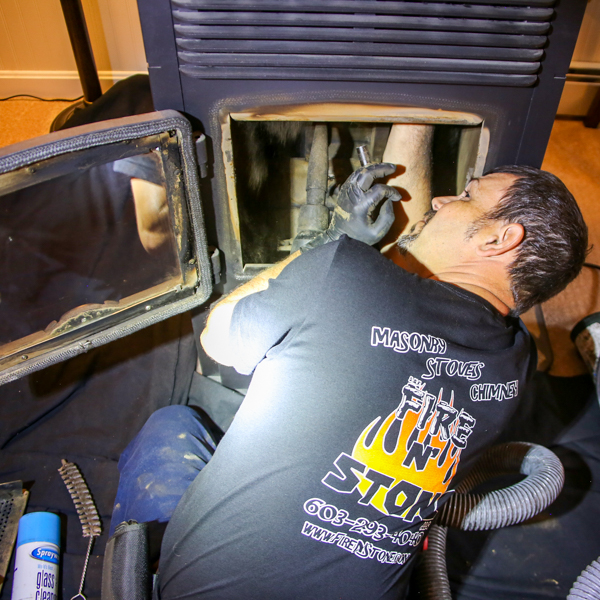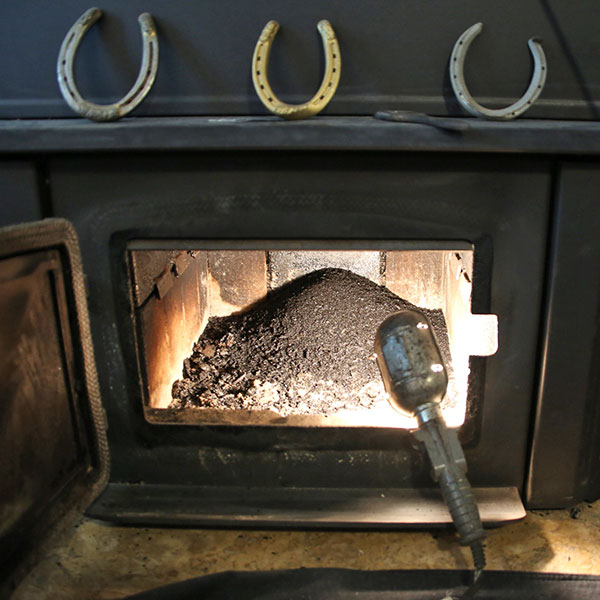Why Creosote is So Dangerous
Fireplaces are a tradition, providing a cozy focal point for homeowners for hundreds of years. However, every fireplace owner must be aware of dangers, including creosote buildup. This post examines what creosote is, what makes it so dangerous, and how to protect yourself.
 What is Creosote?
What is Creosote?
Creosote is a residue that forms when oils in wood and fossil fuels don’t fully combust. These oils off-gas, move up the chimney, condense with water and other chemicals, and stick to the interior walls. Creosote develops in three stages.
Stage One: Creosote starts as a loose, flaky deposit that’s easily brushed away.
Stage Two: If you fail to remove creosote during the first stage, it morphs into a tar-like deposit that’s more difficult to remove.
Stage Three: Finally, creosote hardens and drips like wax if the temperature is too high. Creosote at stage two and three require a professional to remove it thoroughly.
One problem with creosote is that it builds up quicker than you might think. Even the smallest amounts of incomplete combustion can start the process, meaning most homes with a fireplace will have this issue.
Creosote’s Health Effects
Most people talk about creosote’s effects on your chimney, and for a good reason, but few mention the health effects.
These include:
- Skin Irritation: Getting creosote on your skin can cause rashes and other painful reactions.
- Eye Irritation: Creosote exposure can lead to light sensitivity, similar to a chemical burn in your eyes.
- Cancer: Creosote is a known carcinogen which can affect people in homes with poorly maintained chimneys, increasing their cancer risk.
- Creosote’s Fire Hazard: The most worrying thing about creosote buildup is that it’s highly flammable. According to the Chimney Safety Institute of America (CSIA) creosote is one of the leading causes of chimney fires, and it only takes about 1/8″ buildup to become a hazard.
- Chimney Obstruction: Another danger creosote poses is chimney obstruction. When creosote deposits thicken, they restrict the flow of gas and smoke, which can put you at risk of carbon monoxide poisoning. Restricted airflow poses health risks and reduces your fireplace’s efficiency, causing lower heat output and higher wood consumption.
How to Protect Yourself From Creosote
While creosote is unavoidable if you have a wood-burning fireplace, there are ways to reduce the risks significantly.
Regular Chimney Cleaning
Chimney cleaning or sweeping removes blockages, soot, and creosote buildup in the chimney liner, firebox, and smoke chamber to protect your home and chimney. Experts recommend yearly chimney sweeping from a certified professional, or twice yearly if you use your fireplace more frequently.
Chimney Inspections
Like chimney sweeping, experts recommend annual inspections, regardless of how often you use your fireplace. Again, this should be done by a certified professional who can detect issues that could become hazards or expensive repairs down the road.
Burned Seasoned Firewood
More smoke from the fireplace means more creosote. Therefore, it’s essential to be mindful about the wood you use and only burn seasoned firewood, which is wood with a moisture content under 20%. Wet wood is hard to light, creates more smoke, doesn’t produce as much heat, and can make your home smell smoky.
Moreover, while it’s tempting to throw anything that’s combustible into the fire, like Christmas trees, old furniture, or trash, don’t do it. Your fireplace will perform better and be safer if you only burn seasoned wood.
Don’t Rely on Creosote Cleaning Logs
There’s a lot of debate over whether creosote cleaning logs work and if you can use them versus getting your chimney cleaned by a professional. Do these logs work? Yes, to an extent. Creosote removal logs contain a chemical catalyst that can reduce creosote buildup by up to 60%, but typically only in creosote’s first stage. That’s why you still need your chimney professionally cleaned.
 Trust the Pros at Fire N’ Stone
Trust the Pros at Fire N’ Stone
Fire N’ Stone has been in the hearth industry since 2009. Our technicians are certified by the Chimney Safety Institute and the National Fireplace Institute. Our Mott is “From frame to finish; we do it all.” Whether you need chimney cleaning, repairs, maintenance, or reconstruction, we’ve got you covered. And, when you need custom stonework by master craftsmen, we can do that too.
Visit us at our showroom at 539 Laconia Rd, Tilton, NH, or call us to schedule an appointment at 603–293–4040.





